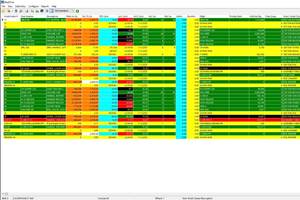New Pressure Transducer For Food & Medical Extrusion
Processors of extruded products for food or medical applications have a new option in pressure transducers that gives improved performance at competitive cost.
Processors of extruded products for food or medical applications have a new option in pressure transducers that gives improved performance at competitive cost. Food and medical applications cannot use the most common sort of transducer because it is filled with a very small amount of mercury. These traditional transducers are said to be the most accurate, stable, and cost-effective pressure sensors for the general extrusion market. Alternative “non-toxic” transducers all present significant compromises in performance and/or cost. But a new oil-filled sensor that meets FDA and USDA requirements is said to overcome previous performance limitations at a relatively low cost.
Oil-filled lasts longer
The new oil-filled PT418 Series transducers from Dynisco, LLC in Franklin, Mass., completes the line of non-toxic transducers available from this company. Dynisco already offers the two other non-mercury types—NaK-filled and push-rod models. Up to now, oil-filled types had a significant drawback, according to Douglas Joy, Dynisco’s director of marketing. The mineral-oil filler, which transfers pressure from the surface diaphragm to the strain gauge, gradually degrades when exposed to high temperatures. As a result, oil-filled sensors typically require frequent calibration checks and may need replacement more often than is acceptable to processors. Joy says tests show that standard oil-filled sensors can fail to operate within specifications after as little as 4 months at 570 F.
Dynisco reportedly has overcome this limitation with a new oil fill material and proprietary processing techniques that result in two to three times longer transducer life. Joy says the new PT418 series has operated within specification for almost a year now. Its maximum operating temperature is 617 F, though the recommended limit for optimum life span is 527 F. Its accuracy (combined error) is rated at ±0.5% with repeatability of ±0.2%. At a price of $690 to $1400, these improved oil-filled models cost a few dollars less than mercury-filled models of comparable accuracy.
Changing the balance
The arrival of longer-lasting oil-filled transducers changes the balance of cost-effectiveness among the three types of non-toxic sensors. Push-rod transducers have about the same accuracy and repeatability specs as oil-filled sensors, and they cost about the same, too. Because they use a metal rod in place of the fluid filling, they can have virtually unlimited life if handled properly, and they can be used at temperatures up to 750 F. However, one big disadvantage of push-rod sensors is that they require careful installation in order to function accurately, and they are vulnerable to pressure spikes due to bumping or vibration. They also experience more zero-shift error in response to changes in either ambient or process temperature than other types of transducers. And because of their thicker diaphragms, push-rod transducers are less accurate than other sensors at low pressures (e.g., 250 to 500 psi).
The remaining category of non-toxic transducers has a sodium-potassium (NaK) liquid fill. They are up to twice as accurate and repeatable as push-rod and oil-filled types. They are also the most sensitive at low pressures and can handle the highest temperatures (up to 1000 F). Their fill does not degrade over time, and they are the least sensitive to temperature-induced zero-shift error. The main disadvantage of NaK sensors is cost (around $1000 to $1200) and their lack of an explosion-proof rating.
Related Content
Process Monitoring or Production Monitoring — Why Not Both?
Molders looking to both monitor an injection molding process effectively and manage production can definitely do both with tools available today, but the question is how best to tackle these twin challenges.
Read MoreDigital Manufacturing: Two Medical Molders Embrace Industry 4.0
‘Digitalization’ and ‘connectivity’ are loaded terms—shorthand for a whole new way of doing 911±¬ÁĎÍř. It can’t be accomplished in one go. But two Midwest molders in the sensitive medical field are already feeling the benefits of their initial steps in that direction.
Read MoreFive Strategies for Cutting Reshoring/ Nearshoring Costs via Data Automation
Leveraging real-time data via tools like ERP and MES is one form of automation plastics processors can apply to capitalize on reshoring and nearshoring trends.
Read MoreFor This Molder, Less Paper + More Data = Higher Productivity
At Tessy Plastics, going paperless means more than idle printers and fewer orders for three-ring binders.
Read MoreRead Next
See Recyclers Close the Loop on Trade Show Production Scrap at NPE2024
A collaboration between show organizer PLASTICS, recycler CPR and size reduction experts WEIMA and Conair recovered and recycled all production scrap at NPE2024.
Read MorePeople 4.0 – How to Get Buy-In from Your Staff for Industry 4.0 Systems
Implementing a production monitoring system as the foundation of a ‘smart factory’ is about integrating people with new technology as much as it is about integrating machines and computers. Here are tips from a company that has gone through the process.
Read MoreFor PLASTICS' CEO Seaholm, NPE to Shine Light on Sustainability Successes
With advocacy, communication and sustainability as three main pillars, Seaholm leads a trade association to NPE that ‘is more active today than we have ever been.’
Read More












